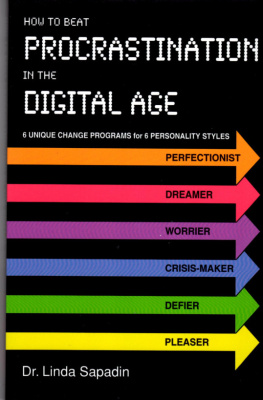Ivaylo Gerchev - Tailwind CSS
Here you can read online Ivaylo Gerchev - Tailwind CSS full text of the book (entire story) in english for free. Download pdf and epub, get meaning, cover and reviews about this ebook. year: 2022, publisher: SitePoint, genre: Home and family. Description of the work, (preface) as well as reviews are available. Best literature library LitArk.com created for fans of good reading and offers a wide selection of genres:
Romance novel
Science fiction
Adventure
Detective
Science
History
Home and family
Prose
Art
Politics
Computer
Non-fiction
Religion
Business
Children
Humor
Choose a favorite category and find really read worthwhile books. Enjoy immersion in the world of imagination, feel the emotions of the characters or learn something new for yourself, make an fascinating discovery.

- Book:Tailwind CSS
- Author:
- Publisher:SitePoint
- Genre:
- Year:2022
- Rating:5 / 5
- Favourites:Add to favourites
- Your mark:
- 100
- 1
- 2
- 3
- 4
- 5
Tailwind CSS: summary, description and annotation
We offer to read an annotation, description, summary or preface (depends on what the author of the book "Tailwind CSS" wrote himself). If you haven't found the necessary information about the book — write in the comments, we will try to find it.
Tailwind CSS — read online for free the complete book (whole text) full work
Below is the text of the book, divided by pages. System saving the place of the last page read, allows you to conveniently read the book "Tailwind CSS" online for free, without having to search again every time where you left off. Put a bookmark, and you can go to the page where you finished reading at any time.
Font size:
Interval:
Bookmark:
Copyright 2022 SitePoint Pty. Ltd.
Ebook ISBN: 978-1-925836-51-6
- Author: Ivaylo Gerchev
- Series Editor: Oliver Lindberg
- Product Manager: Simon Mackie
- Technical Editor: Shahed Nasser
- English Editor: Ralph Mason
- Cover Designer: Alex Walker
All rights reserved. No part of this book may be reproduced, stored in a retrieval system or transmitted in any form or by any means, without the prior written permission of the publisher, except in the case of brief quotations embodied in critical articles or reviews.
The author and publisher have made every effort to ensure the accuracy of the information herein. However, the information contained in this book is sold without warranty, either express or implied. Neither the authors and SitePoint Pty. Ltd., nor its dealers or distributors will be held liable for any damages to be caused either directly or indirectly by the instructions contained in this book, or by the software or hardware products described herein.
Rather than indicating every occurrence of a trademarked name as such, this book uses the names only in an editorial fashion and to the benefit of the trademark owner with no intention of infringement of the trademark.

Published by SitePoint Pty. Ltd.
10-12 Gwynne St, Richmond, VIC, 3121
Australia
Web: www.sitepoint.com
Email: books@sitepoint.com
SitePoint specializes in publishing fun, practical, and easy-to-understand content for web professionals. Visit http://www.sitepoint.com/ to access our blogs, books, newsletters, articles, and community forums. Youll find a stack of information on JavaScript, PHP, design, and more.
Ivaylo Gerchev is a web developer/designer from Bulgaria. In his free time he likes to write articles and tutorials sharing his knowledge and understanding on various web development topics. His favorite topics include UI, UX, SVG, HTML, CSS, Tailwind, JavaScript, Node, Nest, Adonis, Vue, React, Angular, PHP, Laravel, and Statamic. The best tools he uses are Figma and VS Code. When he's not programming the Web, he loves to program his own reality.
This book is for anyone who wants to better understand how to write effective HTML emails. No prior experience of creating emails is required, but you should have experience of HTML and CSS.
Code in this book is displayed using a fixed-width font, like so:
A Perfect Summer's DayIt was a lovely day for a walk in the park.The birds were singing and the kids were all back at school.
Youll notice that weve used certain layout styles throughout this book to signify different types of information. Look out for the following items.
Tips, Notes, and WarningsHey, You!Tips provide helpful little pointers.
Ahem, Excuse Me ...Notes are useful asides that are relatedbut not criticalto the topic at hand. Think of them as extra tidbits of information.
Make Sure You Always ...... pay attention to these important points.
Watch Out!Warnings highlight any gotchas that are likely to trip you up along the way.
Supplementary Materialshttps://www.sitepoint.com/community/ are SitePoints forums, for help on any tricky problems.books@sitepoint.com is our email address, should you need to contact us to report a problem, or for any other reason.
There are two main types of CSS framework. One is based around componentsa group that includes frameworks such as Bootstrap, Foundation, and Bulma. The other type of CSS framework is based around utilitiesa group that includes the likes of Tachyons, Tailwind CSS, and Windi CSS.
If youre not clear on the difference between component and utility classes, jump to the What Is a Utility Class? section below, and then continue reading from here.
For many years, component-based frameworks were the de facto standard for building websites quickly and easily. But all this magic comes with a price. Without serious customization, sites built with such frameworks look similar to each other. And customization is a real pain in the neck for anyone who wants to build something more complex and/or creative. Component-based styles are easy to implement, but inflexible and confined to certain boundaries. Solving specificity issues while trying to override the default styles of a particular framework isnt a fun and productive job.
Utility-first frameworks were created to solve this problem. A utility-first framework is built with low-level functionality in mind. Utility classes offer much more power and flexibility than component classes.
Utility-first frameworks provide the following advantages:
- Utility classes operate at a low level. This means we have more control and flexibility over how we apply thema concept thats similar to the power and flexibility offered by a low-level language like C or C++, in contrast to high-level languages such as JavaScript or PHP.
- Utility classes are easy to customize, so we can build any design.
- A utility-first approach scales well. Its great for managing and maintaining large projects, because we only have to maintain HTML files, instead of a large CSS codebase. Its already used with success by big sites like GitHub, Heroku, Kickstarter, Twitch, and Segment.
- Utility classes can be adopted to any design.
- Utility classes are completely customizable and extensible. Its easier to build unique, custom website designs without fighting with unwanted styles.
- Utility classes allow for much easier implementation of responsive design patterns.
- Utility classes have consistent styles, which gives us a ready-to-use design system. We can also create our own design system if we need to.
- With utility classes, we can still extract common, repetitive patterns into custom, reusable components. But in contrast to predefined components, custom components will be exactly what we need.
In summary, we can say that a utility-first framework gives us balance between the concrete and the abstract.
Now that weve seen how useful utility-first frameworks can be, its time to pick one and see what it can do for us in action. In this book, well explore Tailwind CSS, which is the most popular of the utility-first frameworks.
Tailwind is a set of low-level, reusable utility classes that can be used like building blocks to create virtually any design we can imagine. This utility-first framework covers the most important CSS properties, but it can be easily extended in a variety of ways. It can be used either for rapid prototyping or for creating full-blown designs.
Font size:
Interval:
Bookmark:
Similar books «Tailwind CSS»
Look at similar books to Tailwind CSS. We have selected literature similar in name and meaning in the hope of providing readers with more options to find new, interesting, not yet read works.
Discussion, reviews of the book Tailwind CSS and just readers' own opinions. Leave your comments, write what you think about the work, its meaning or the main characters. Specify what exactly you liked and what you didn't like, and why you think so.









